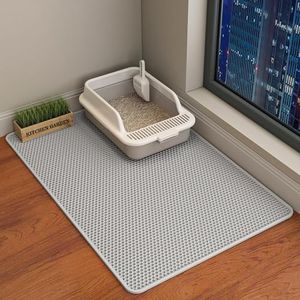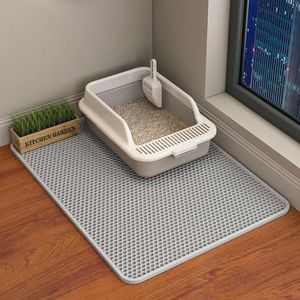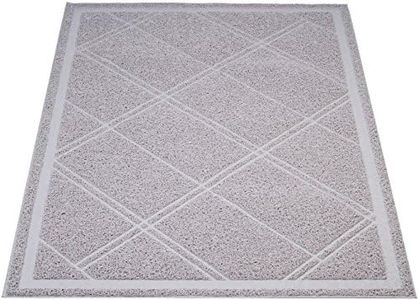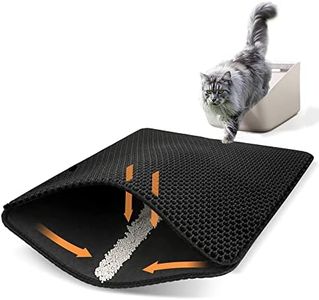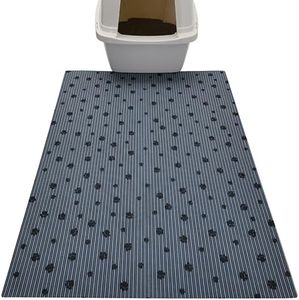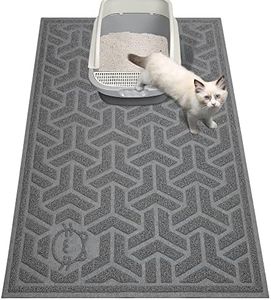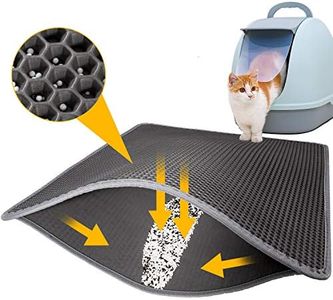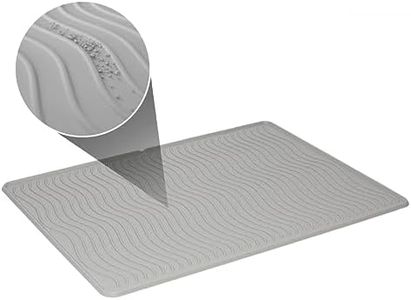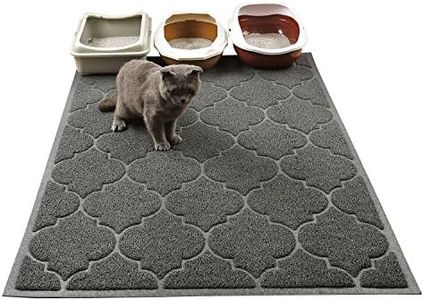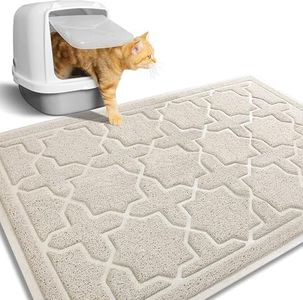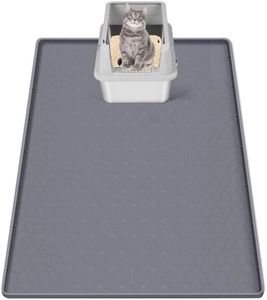We Use CookiesWe use cookies to enhance the security, performance,
functionality and for analytical and promotional activities. By continuing to browse this site you
are agreeing to our privacy policy
10 Best Cat Litter Mats
From leading brands and best sellers available on the web.Buying Guide for the Best Cat Litter Mats
Choosing a cat litter mat might seem simple, but the right mat can make a big difference in how much litter stays off your floors and how easy cleanup becomes. Cat litter mats are designed to catch and trap litter as your cat exits the litter box, preventing it from spreading throughout your home. When picking the best cat litter mat for your needs, think about your cat's habits, how much litter tends to escape, where you keep the litter box, and how often you want to clean the mat. Your goal is to find a mat that works well for your space, is comfortable for your cat, and makes your daily cleaning routine easier.MaterialThe material of a cat litter mat determines how effectively it traps litter and how easy it is to clean. Mats come in various materials like rubber, PVC, mesh, and foam. Rubber mats are usually more durable, water-resistant, and easy to rinse off, while foam and mesh mats might be softer on your cat's paws but could trap odors or be harder to shake out. If your cat is sensitive or dislikes certain textures, that may influence the material you choose. Think about your priorities: if you want easy cleaning and long-lasting use, thicker rubber or PVC may be preferable; if paw comfort is your main concern, a softer foam or mesh might be ideal.
SizeMat size is crucial because it affects how well the mat can catch litter before it spreads onto your floor. Small mats are suitable for tight spaces or for single cats who are neat, but they may not catch as much litter. Medium-sized mats offer a balance for most situations, while large or extra-large mats are best for energetic cats, multiple cats, or high-traffic areas where litter tends to scatter more. To pick the right size, observe how far your cat typically tracks litter and measure the area around your litter box to ensure the mat will cover potential spill zones.
Surface TextureThe texture of a litter mat impacts its ability to collect litter from your cat's paws. Mats can have deep grooves, mesh, or soft bumps. Deep grooves and mesh patterns tend to trap more litter, making them great for messy cats or high-tracking litter types. On the other hand, mats with softer textures may be more comfortable but less effective at trapping. If your cat has sensitive paws, balance comfort and effectiveness by choosing a mat with gentle but adequate ridges or patterns.
Ease of CleaningYou'll need to clean your cat litter mat regularly, so how easy it is to maintain matters. Some mats can be simply shaken or vacuumed, while others can be rinsed or wiped down. Mats that open up or have a two-layer design can collect litter inside, making emptying easier. If you want low-maintenance cleaning, look for mats with simple designs that don't trap litter too deeply and can be cleaned with minimal effort.
Water and Odor ResistanceSince some cats make messes with both litter and liquid, a mat that doesn’t absorb moisture or smell is especially practical. Water-resistant mats prevent urine from soaking in, which helps keep your floor clean and odor-free. Mats that are also odor resistant stop unwanted smells from lingering. If you have a kitten, an older cat, or a cat who occasionally misses the box, prioritize these features.
Safety and Non-slip BackingThe mat should stay in place, even when an energetic cat jumps out of the box or plays nearby. Mats that slide around could not only fail to catch litter but might also be a tripping hazard. Look for mats with a non-slip or rubberized backing. If you place the mat on tile or hardwood, this feature is especially important. Always check if the mat lays flat and stays put to ensure both cleanliness and safety.
